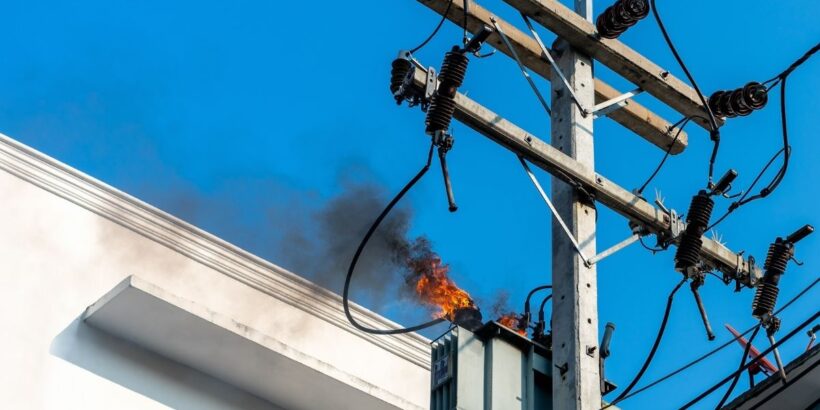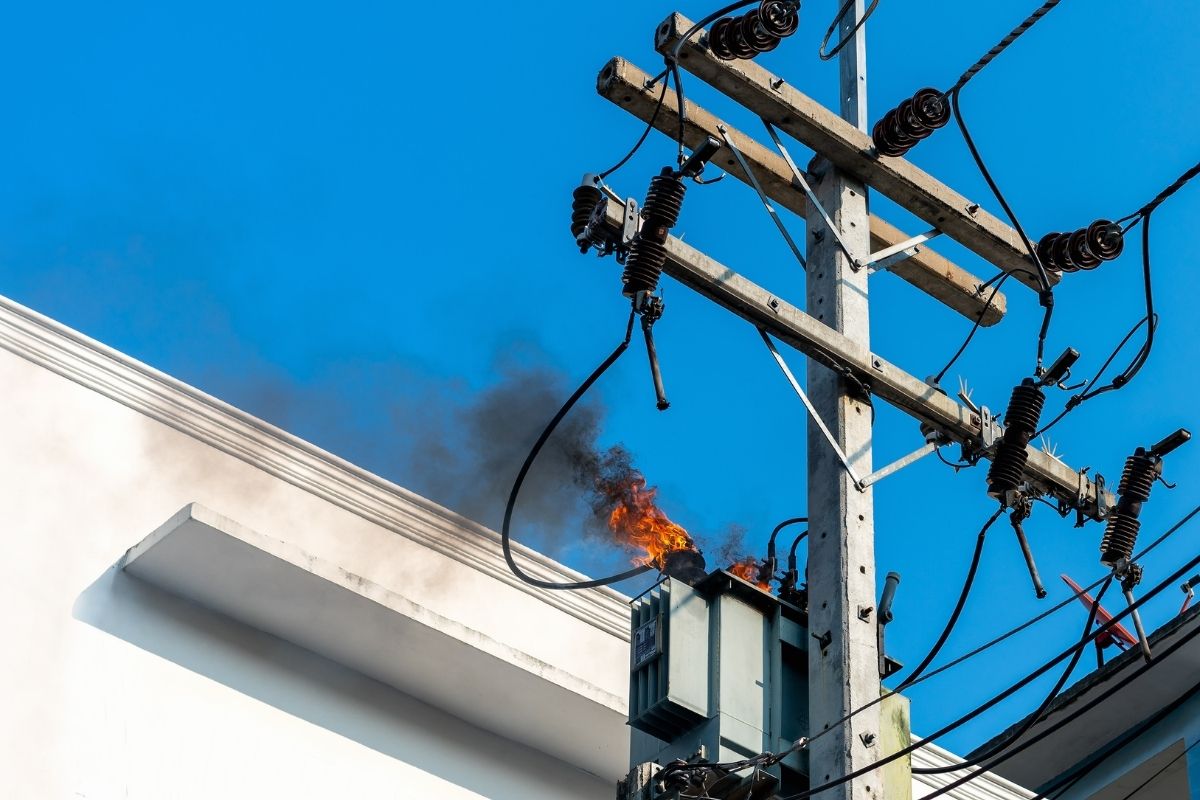Fires in electric utilities can cause interruptions to power supply, endanger workers, and negatively impact the environment. Learn essential tips to prevent fire damage to electric utilities to protect people, the environment, and property.
Delve into the hazards that arise when utility poles catch fire, the importance of ongoing maintenance, options for replacing utility poles with fire-resistant materials, and the vital role of implementing safety standards. By incorporating these practices, we can ensure safer, more reliable power infrastructure.
Hazards From Utility Poles on Fire
Fire touching a utility pole can initiate a variety of hazardous situations. The heat from the fire can cause the pole to catch alight. Once electricity hits the heated pole, it might intensify the fire.
In some cases, the fire can result in power lines coming down and making contact with the ground. This could occur because of storm-related activity, vehicles striking power poles, or other hazardous situations that lead to a fire.
A downed power line is a high-voltage electrical wire that has landed on the ground or another object, such as a house or tree. The line’s live electrical currents pose a deadly threat to life and can cause additional electrical fires.
Regular Inspections and Maintenance
A crucial aspect of fire prevention in electric utilities is conducting regular inspections and maintenance. These practices help identify potential issues, such as wear and tear, improper grounding, or faulty parts, before they escalate into hazardous situations.
One example of ongoing maintenance is checking connections on electrical equipment to ensure they are secure and tight. Additionally, evaluating equipment grounding is necessary to prevent electrical shock and fires. And when faulty parts are identified, timely replacement is vital for maintaining a safe working environment.
Utility Pole Repairs or Replacements
Replacing utility poles with those constructed from fire-resistant material enhances the safety and resiliency of power infrastructure. This innovative approach ensures improved durability and considerably reduces the risk of fire-related incidents.
Over the years, significant advancements in utility pole technology have positively impacted the power sector. These materials have fire-resistant properties that make them less susceptible to ignition and able to withstand high temperatures, making them a safer and more reliable choice for utility poles. For example, replacing wooden utility poles with ductile iron poles is one of the ways utility companies can prepare for severe weather, including weather events that increase the risk of wildfires.
Safety Standards
Adhering to established safety standards and guidelines is another essential method for limiting fire risks. International and regional safety standards, such as those developed by regulatory bodies like the National Electrical Safety Code (NESC) or the National Fire Protection Association (NFPA), provide guidelines for best practices and minimum requirements to minimize fire risks.
By following these safety standards, electric utilities can foster a culture of safety and reduce the likelihood of fires, accidents, and injuries. Utility companies must train employees on fire safety protocols to ensure adherence to regulatory standards.
The safety and integrity of electric utilities provide an uninterrupted power supply and protect life and property. Regular inspections and maintenance, the use of fire-resistant utility poles, and adherence to safety standards are all vital strategies to mitigate fire risks.


One comment